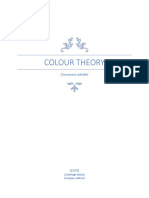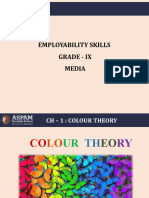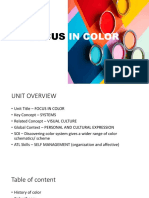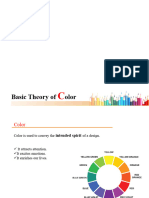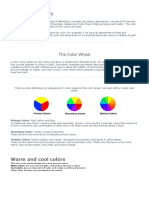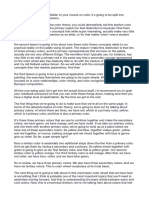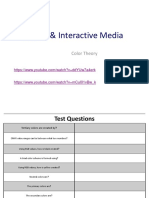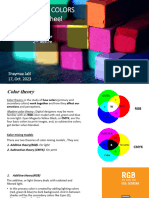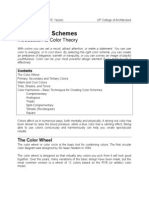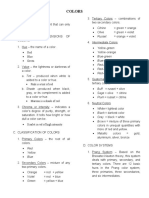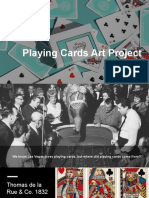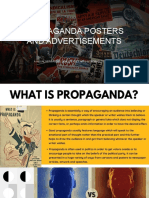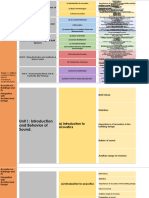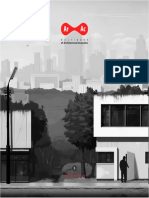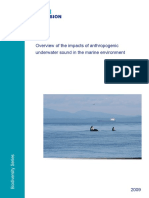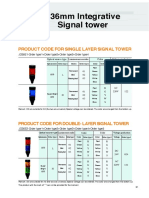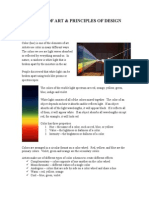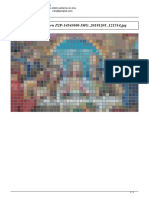0% found this document useful (0 votes)
233 views1 pageColortheorystudyguide
Complementary colors are directly across from each other on the color wheel and create high contrast when placed together, such as red and green. Analogous colors are next to each other on the color wheel and create a calm effect with little contrast, like red, red-orange, and orange. There are also triadic, split-complementary, rectangular, and square color harmonies that combine colors in different arrangements around the color wheel to create varying levels of contrast. The color wheel is used to understand how colors relate and combine, with hues, values, intensities, warm colors, cool colors, and other qualities that impact color mixing and effects.
Uploaded by
api-285692559Copyright
© © All Rights Reserved
We take content rights seriously. If you suspect this is your content, claim it here.
Available Formats
Download as DOCX, PDF, TXT or read online on Scribd
0% found this document useful (0 votes)
233 views1 pageColortheorystudyguide
Complementary colors are directly across from each other on the color wheel and create high contrast when placed together, such as red and green. Analogous colors are next to each other on the color wheel and create a calm effect with little contrast, like red, red-orange, and orange. There are also triadic, split-complementary, rectangular, and square color harmonies that combine colors in different arrangements around the color wheel to create varying levels of contrast. The color wheel is used to understand how colors relate and combine, with hues, values, intensities, warm colors, cool colors, and other qualities that impact color mixing and effects.
Uploaded by
api-285692559Copyright
© © All Rights Reserved
We take content rights seriously. If you suspect this is your content, claim it here.
Available Formats
Download as DOCX, PDF, TXT or read online on Scribd
/ 1



